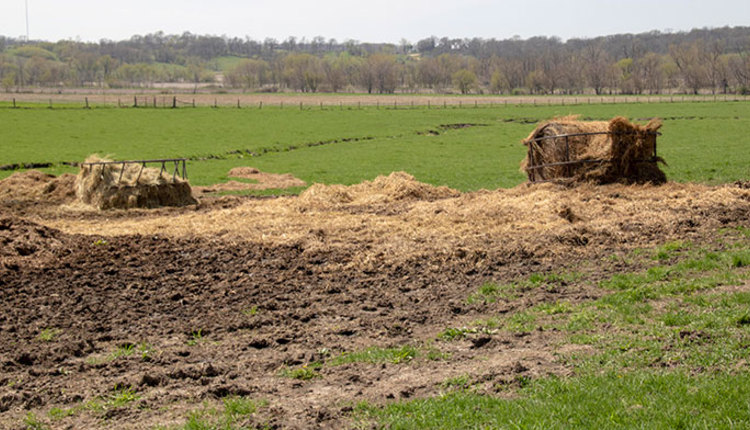
Improper storage and feeding methods can lead to drastic amounts of forage waste. Reducing losses by just a few percentages has a direct effect on the financial status of a livestock operation.
Striving to lower forage storage and feeding waste also often improves forage quality. Jessica Williamson, Penn State University extension forage specialist, explains in her recent article the different options producers have for better utilizing winter feed.
“Dry hay has the potential to meet most ruminant livestock nutrient requirements if harvested correctly and at the optimal stage of maturity to meet the class of livestock’s nutrient requirements,” Williamson writes. “But quality must be maintained throughout the storage period. If not, supplemental nutrition or more of it often becomes a necessity.”
Many factors at play
Uncovered hay can exhibit dry matter storage losses of near 30 percent, resulting in one of the largest economic losses on a livestock operation. The extent of these losses is impacted by bale density, weather conditions, and forage species. Williamson explains that as rain leaches through a bale, it also washes away soluble carbohydrates. This reduces the total digestible nutrients (TDN) of the hay.
She notes that dry matter loss occurs after harvest as a result of plant respiration, even if the hay is less than 20 percent dry matter at harvest. Dry matter losses are even greater when levels are more than 20 percent due to microbial activity and mold growth.
The best solution to these problems is to cover the hay. The optimal solution is to use a hay barn to provide storage, but other options such as plastic coverings also are effective in reducing losses. If no cover is available, Williamson recommends storing bales off the ground, either on pallets or gravel. This prevents bales from sitting in water during periods of high precipitation.
Williamson cites a University of Tennessee study that showed bales stored in a hay barn had a 5 percent loss and those stacked or tarped had a 14 percent loss. Net-wrapped bales had a 23 percent loss while uncovered, twine-bound bales had a loss of 30 percent.
Feed it right
Each method of feeding hay has its benefits and disadvantages, but overall, ensuring high-quality forages are fed prevents the biggest factor in feeding losses — hay refusal. The other losses during feeding such as trampling, fecal contamination, and leaf shatter are related to how the hay is fed.
“Feeding hay on pasture ground can have benefits and downfalls,” Williamson notes. “Spreading the hay out and moving the location of where it is fed can provide benefits to the soil health and reseeding of forages within that pasture. This practice works best if the hay is very clean and weed-free,” she adds.
When feeding hay on pasture, offer only a single day’s worth of feed at a time to reduce loss due to sorting, trampling, bedding, and fecal contamination.
Using feed rings prevents waste from trampling or fecal contamination by providing a barrier between the hay and the livestock, but this could lead to loss of pasture as a result of compaction and trampling of the sod. Williamson recommends to feed hay out of rings on concrete or gravel. Regardless of the feeding method, the feeding site should always be well-drained.
Carefully plan methods to improve storage and feeding. The small improvements can make a direct and immediate impact on the bottom line of a livestock operation.

Michaela King served as the 2019 Hay & Forage Grower summer editorial intern. She currently attends the University of Minnesota-Twin Cities and is majoring in professional journalism and photography. King grew up on a beef farm in Big Bend, Wis., where her 4-H experiences included showing both beef and dairy cattle.

